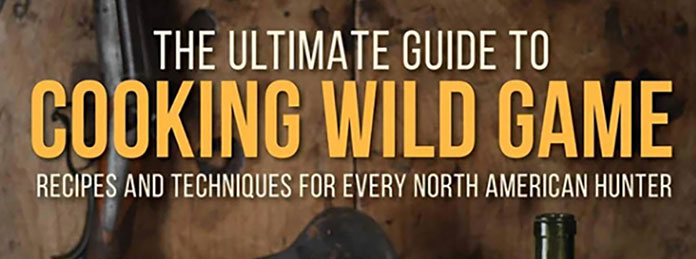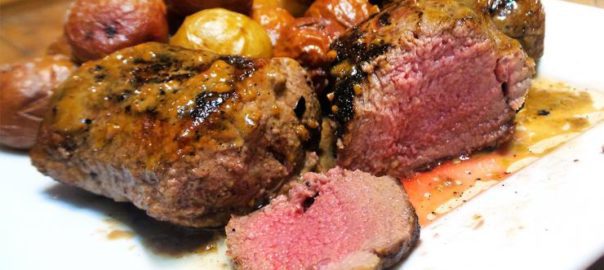Field Dressing Equipment – Small and Large Game, and Wild Game Birds
Once you have successfully identified and targeted your specific game, the real work will begin if you have downed you animal. For small game and birds, the task isn’t terribly daunting, but field dressing an elk or moose and packing out 100 or 200 pounds of meat along with your gear takes considerably more effort. To help make your haul-out as easy as can be, below is a general list for what you should carry on your next hunting trip to properly field dress your game. To make the task even easier, hunt with a friend, which allows for a much more efficient and sage process for packing out the meat.
Small and Large Game
Marking Tape
Marking Tap, particularly photodegradable tape that breaks down over time when exposed to sunlight, is good to have on hand when your shot isn’t perfect. Rather than dropping in its tracks, a wounded animal, as the result of a bad shot, may run for twenty yards or two miles. Having a roll of tap on hand will allow you to mark the track of the injured animal (via blood, hair, etc.) rather than trying to remember the location of those signs, especially if you’r hunting in thick vegetation or near dark.
Cutting Tools
- Hunting Knife – This can be as varied as you’d like, from a classics folding hunting knife to elaborate knives with replaceable blades. It’s good practice to have a bright handle on your knife, like blaze orange. This makes your knife much easier to find, especially when buried in the animal or in vegetation.
- Knife Sheath – A sheath protects your knife and yourself when the blade is not in use. Always good to have on hand.
- Sharpener – A must when cutting up your bounty. Always make sure your knife is razor sharp before using. If you prefer a knife with replaceable blades, plan for 1 or 2 blades per animal, and maybe another to keep on hand as a spare.
- Gut Hook – This tool quickly cuts through thick skin, saving your knife’s blade for the meat. However, a sharp knife will work just fine, especially when you’re packing your gear in and out and weight is of the utmost importance. If you opt for a gut hook, select a lightweight model.
- Bone Saw – Not necessary, but some hunters prefer to carry one. All depends on your method of field dressing.
Other Equipment
- Cords or Rope – handy for hanging meat to cool while making trips out or filling other tags.
- Game Bags – Those blue disposable Nitrile gloves are inexpensive while keeping your hands clean and warm. Figure a couple pairs per animal.
- Ground Cloth – Whether you’re using a nylon tarp or an old bed sheet, a ground cloth helps keep your meat clean and out of the dirt.
- Light-Weight Sled – Great when field dressing in deep snow. A sled definitely makes it easier to transport the weight and haul out, especially heavy loads. if there’s a place you can stash the sled close by while hunting, even better.
- Pack Liners – The 2mm- or 3mm-thick trash compactor bags work well to line your pack and bags to prevent blood and stains from ruining your gear. Pack a couple for field dressing and keep a couple extra in your vehicle.
- Zip Ties – great for many uses, such as connecting your hunting license to your game while field dressing.
Wild Game Birds
Always check the regulations regarding the field dressing of waterfowl and game birds in the state you’re hunting, as regulations vary from state to state. For example, some states require that the head and a wing remain on the waterfowl to determine the sex and species while in other regions you may have to leave the head on a cock pheasant.
Plucking Versus Skinning
Many hunters prefer to pluck their upland birds and skin their waterfowl. The devision is entirely up to you. Both types of game birds can be plucked or skinned. Plucking your birds leaves the skin on and makes for a tastier meal by sealing in natural juices, but it may leave annoying pinfeathers or down. Skinning, meanwhile, allows you to clean your birds faster and makes it easier to remove the heavy fat under the skin that adds an oily taste to the meat. however, it’s often difficult to keep the meat moist while cooking.
Equipment
When field dressing game birds, there isn’t too much equipment and tools involved, as opposed to field dressing large game like elk or moose.
- Sharp Hunting Knife (with sharpening stone or replaceable blades and sheath) – As noted previously, in the small and large game field dressing equipment list, a sharp hunting knife is a must, especially when removing the bird’s head, feet and wings and then gutting the animal.
- Snipping Shears or Scissors – this tool is useful for cutting off wings and legs of larger birds such as geese, ducks and turkeys, but isn’t essential.
Other Equipment
- Game Bags – small game bags are ideal to keep your birds clean and cool when packing out in the field. In a pinch you can use pillowcases.
- Gloves – Again, blue disposable Nitrile gloves are inexpensive while keeping your hands clean and warm. Figure a couple pairs depending on how many birds you are cleaning.
- Ground Cloth – Whether you’re using a nylon tarp or an old bed sheet, a ground cloth helps keep your birds clean and out of the dirt.
- Pack Liners – The 2-mm or 3-mm -thick trash compactor bags work well to line your pack and bags to prevent blood and stains from ruining your gear. Pack a couple for field dressing and keep a couple extra in your vehicle.
Editor’s Note: This is an excerpt from THE ULTIMATE GUIDE TO COOKING WILD GAME available in the Sporting Classics Store.



